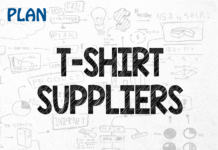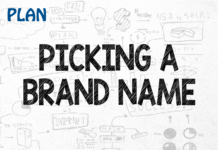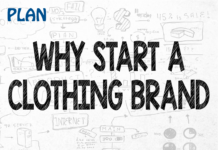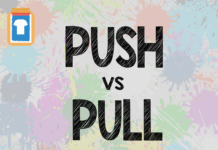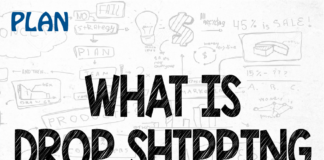Top 11 Guerrilla Marketing Stories
-
Foursquare – grew average check-ins from 250,000 to 350,000 with just chalk and rubber balls

Foursquare didn’t have a booth like most other brands at the 2010 SXSW convention. Neither did it have Twitter’s marketing budget (Twitter spent $11k on its SXSW campaign). Instead, it set up an actual game of “four square” in front of the convention hall, which involved just chalk and two rubber balls.
The game drew thousands of walk-up participants, said CEO Dennis Crowley,“We played all day long, and there was always a waiting line. We were handing out tee shirts, buttons, and stickers. Anytime someone didn’t know what Foursquare was, we helped them find it on their phone. We helped get them up and running and using it.”
-
Tinder – grew from 5,000 to 15,000 users by seeding college parties

Tinder’s early marketing strategy is very elaborate (and controversial), but the basic idea is that they personally invited friends to download the app, then visited the best “party colleges” and got attractive, influential figures on board, and the app took off.
“After seeding USC, Justin and Whitney traveled to schools like SMU in Dallas. Whitney might stand on a table in a fraternity and announce that there were 200 hot sorority girls on the app waiting for the men to sign up, then run to the sorority and tell them the reverse. They left a trail of stickers behind them—in the best campus bars, in the most exclusive nightclubs.” (Source: TechCrunch)
3. The Ice Bucket Challenge and #nomakeupselfie – contagious challenges with phenomenal success
These chart demonstrate the phenomenal success of the Ice Bucket Challenge – the peer-to-peer campaign raised an insane amount of money, and now it’s difficult to find a person who doesn’t know about ALS.
Admittedly, it’s difficult to replicate the success of the Ice Bucket Challenge. But there are some fundamental principles to try and keep constant. Your challenge should be:
- Doable. Consider the Harlem Shake craze, and how easy it was for any group of people to recreate it within minutes. The easier it is to do, the likelier it is that people will do it.
- Highly social. Being able to nominate your friends turns a one-off challenge into a conversation starter and a spectator sport.
- Flattering to your participants. People want to look good, whether they’re influential bloggers or a bunch of teenagers bored in the summer.
The Ice Bucket Challenge allowed you to perform honorability by ‘stepping up’ to the plate. At the same time, you got to look important for being a nominee in the first place. Most importantly, you wouldn’t look like a self-important attention seeker because you were just responding to a challenge.
And if you didn’t want in, you could just very kindly write a check like Sir Patrick Stewart did. Flattering their participants made the challenge so much more enticing and contagious.
Again, this contagious campaign was about allowing participants perform an identity, while feeling that they’re advancing a charitable cause. In this case, #nomakeupselfie struck a chord with so many women because they were given permission to demonstrate frustration with beauty standards. Each selfie was its own little rebellion.
The campaign flattered participants by demonstrating that they were brave, and participants wouldn’t feel insecure if everyone did it together.
4. Gold Toe – Made Bulls Wear Underwear

Sometimes guerrilla marketing is all about implementing your wackiest idea.
Don’t believe me? Here’s an example:
Do you have a new underwear line that you need to gain awareness to? Why not manufacture one of the largest-sized underwear ever seen and place them on statues?
Too crazy?
Apparently not, at least not according to Gold Toe.
In order to promote their new underwear line, Gold Toe made an enormous pair of briefs and placed them on the New York City’s best-known landmark – the Wall Street Bull.
The result?
Hundreds of tourist selfies and press coverage for Gold Toe.
5. Lifelock – I Dare You To Steal My Stuff
Is there a better way to prove your services than to dare people to attempt against you?
This is one of the routes taken by Facebook to discover bugs on its platform — by offering a bounty to hackers who bring software bugs to their attention.
In 2007, Lifelock, an identity theft prevention company took this to the extreme.
Todd Davis, CEO of Lifelock ran TV commercials that published his real social security number and dared identity thieves to try their luck against the company.
This worked because the company was audacious and entertaining. They turned an unusually boring activity (identity theft prevention) into a dare.
And as you may know… Nobody can resist a well-timed dare.
As Ryan Holiday puts it succinctly, “If you run a business that isn’t cutting edge or doesn’t naturally stick out of the crowd, it’s your job to be different and get attention.”
6. Dollar Shave Club – Create A Viral Video

One of the pillars in how to succeed in guerrilla marketing is not to take oneself too seriously.
The Internet is about entertainment.
Look at the thousands of shared made across social media every day — they are mostly pictures of cute cats, memes or funny videos.
If you want to make your guerrilla marketing stand out and attract eyeballs… You have to be entertaining. Or funny.
Which was what Dollar Shave Club did.
The subscription shaving company (later on bought over for $1 billion dollars by Unilever) blew up on the Internet with a hilarious video. The video, which was meant to launch the service, has accumulated over 24 million views since Dollar Shave Club’s launch.
The video echoed Old Spice’s popular ads and left many companies scrambling to try to recreate the success of Dollar Shave Club.
7. Warby Parker – Gatecrash New York Fashion Week
PR stunts are expensive. PR stunts are best left to companies with a large-enough budgets to make it work.
That is the understanding that most people have when it comes to creating stunts to generate awareness.
However, that is not true.
PR stunts CAN be done on the cheap. All you need is creativity.
And Warby Parker did just that. Founded in 2010, Warby Parker wanted to make a splash by participating in New York Fashion Week. However, in order to do that, you have to either do a runway show or a presentation.
As a newly-founded startup, Warby Parker did not have resources to do either. Instead of giving up, they decided to “gatecrash” NY Fashion Week using their own methods.
How?
Hosting their own secret presentation the day before NY Fashion Week started. They staked out the reading room in New York Public Library and got their employees to hoard the tables.
Then, they invited 40 editors to meet them in front of the library, while instructing them to keep silent on their purpose of being at the library. In the meantime, Warby Parker had 30 models getting ready in the hotel next door.
At approximately 3:30 that day, they invited everyone (editors and models) in and the models sat at the tables, pretending to read some bright blue books. The editors went around snapping pictures and taking notes.
It was a huge success for Warby Parker.
Every editor that was at the library wrote about Warby Parker and the guerrilla flash mob — and they stole the show from NY Fashion Week that year.
8. Grasshopper – Sending Chocolate Grasshoppers To Influencers

In The Ultimate Sales Machine, Chet Holmes introduced the idea of the Dream 100: 100 influential people you need to reach out to and build a relationship with in order to make your company successful.
That’s what Grasshopper did.
Grasshopper, a company that provides virtual phone solutions for entrepreneurs knew that they needed to get business owners on board to use their services.
So, they listed down 5000 of the most influential business leaders, journalists and bloggers in the US and sent all of them 5 chocolate covered grasshoppers. These chocolate grasshoppers were delivered in a branded, glossy-white bag and was accompanied with a hangtag instructing the influencer to visit a landing page (that contained an inspirational video.)
The video encouraged them to take unconventional risks and try a chocolate-covered grasshopper.
Was it a success?
You bet it was.
This particular stunt earned Grasshopper 8,000 video views a day. The influencers, impressed by the stunt also tweeted about the campaign, sharing it with a total of 875,000 followers.
9. Deliveroo – Cute Kangaroo Onesies

A huge portion of Deliveroo’s target markets are office professionals who order lunch into the office.
This means that the office district of any city Deliveroo operates in is a crucial area that Deliveroo should target for its marketing efforts.
Which they did.
Every Friday, the staff of Deliveroo Singapore put on kangaroo onesies and head to the Central Business District to hand out flyers, tote bags, notebooks and other Deliveroo merchandise.
These onesies emphasize the brand image of Deliveroo (a kangaroo) and creates top-of-mind awareness on the people working in the area.
10. Uber – Uber Kittens

Do you need money to create a stunt?
Not really. Sometimes all you need is knowing the right people to collaborate with.
Like Uber.
In 2013, Uber partnered with Cheezburger and ASPCA for a UberKITTENS promotion, where Uber drivers delivered kittens to users in participating cities. These kittens were delivered to users who then had 15 minutes to play with the kittens.
The best part?
These kittens were also up for adoption. Uber helped 30 kittens get adopted and raised over $14,000 for ASPCA.
A win-win for everyone around, isn’t it?
11. WePay – Drop A Huge Block Of Ice In Their Competitor’s Conference
Is everyone complaining about a flaw that your competitor has… and your competitor has done nothing about it?
That’s your chance. That’s the elephant in the room that needs to be talked about.
And you should.
Which was what WePay brazenly did.
WePay, a service that makes it easy to accept payments from multiple people, competes with PayPal. And PayPal’s flaw? PayPal is notorious for freezing accounts “randomly”.
Many people have had their PayPal accounts frozen or limited with no access to their money.
So here’s what WePay did:
WePay froze several hundred dollar bills with a note saying “PayPal Freezes Your Accounts” in a 600-pound block of ice. Using a pallet mover, Rich Aberman, WePay’s cofounder wheeled the block of ice into PayPal’s conference and dropped it off — essentially telling the entire conference that they should “unfreeze their money by switching to WePay.”
Daring? Yes.
Effective? Yes too.


